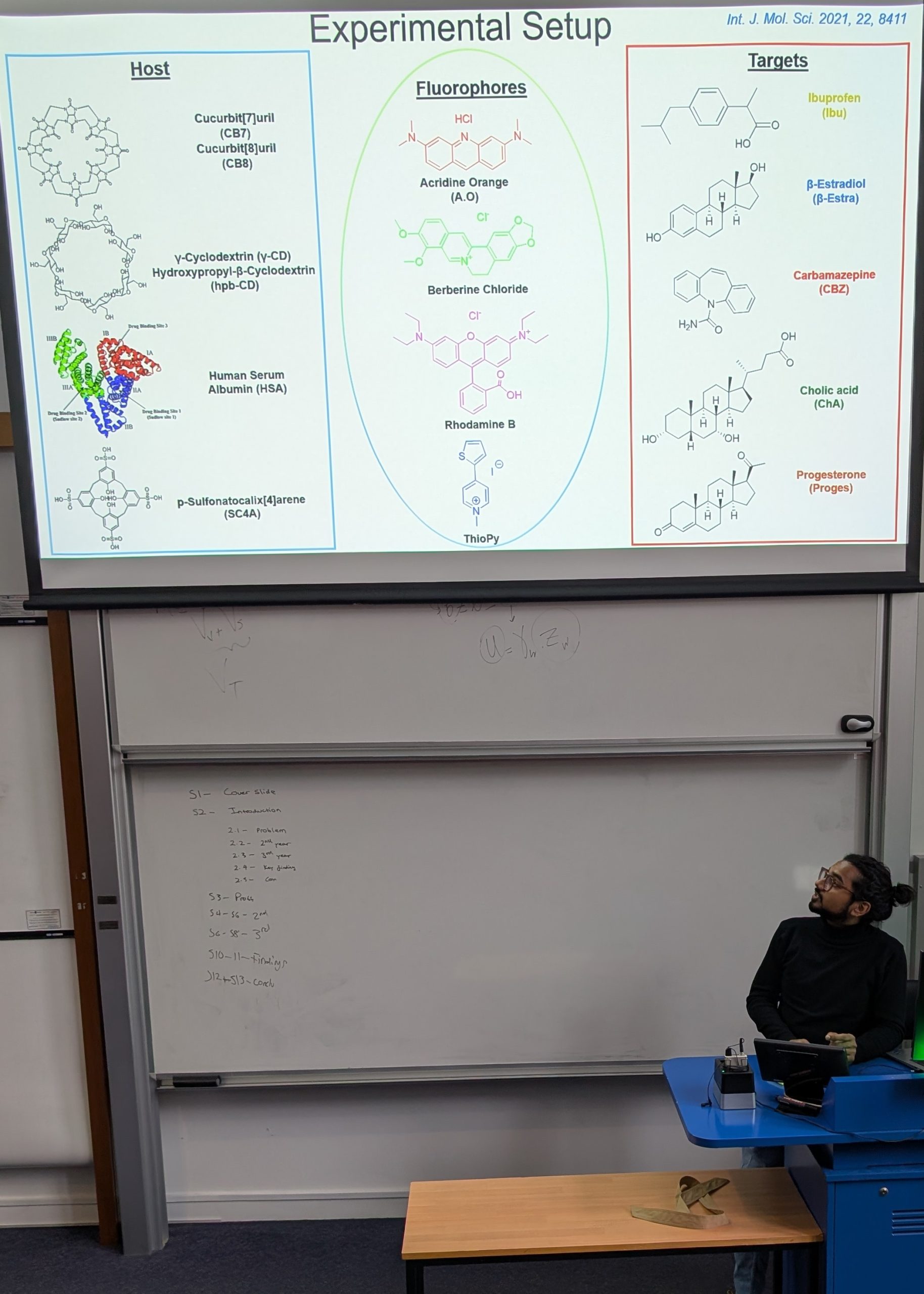Time truly flies when you’re immersed in exciting science. I recently had the opportunity to give my first-ever presentation as a PhD student, and I couldn’t have asked for a more encouraging setting than the Functional Molecular Assembly (FMA) section talks, an annual internal event at the University of Glasgow that brings together researchers working on advanced functional materials and molecular systems.
As a doctoral candidate (DC11) in the INCLUE project, my research in the Peveler Group focuses on developing holistic sensing strategies for pollutants and ecotoxicity in treated sludge. During my presentation, I introduced the motivation behind this work, wastewater sludge, though often treated as waste, has great potential for reuse. However, its safe application is challenged by the presence of emerging contaminants, which we aim to detect using chemistry-based sensing systems.
I shared the framework of our approach, which involves designing cross-reactive sensor arrays using macrocyclic hosts such as cucurbiturils, cyclodextrins, human serum albumin, calixarenes, and fluorescent dyes like acridine orange, rhodamine B, berberine, and ThioPy, analyzed via fluorescence indicator displacement assays (FIDAs). So far, we’ve tested over 720 host-dye-analyte combinations and are seeing promising results that support the potential of our platform for pattern recognition and pollutant screening.
A highlight of my talk was the fluorescence turn-on response from Acridine Orange with CB8, a useful signal in optical sensing. It was one of those moments that made me pause and think, yes, we’re on the right track.
The next steps will involve applying our sensor arrays to spiked analyte mixtures and real treated sludge samples, with a particular focus on compounds like carbamazepine, PFAS, pesticides, and heavy metals. Our long-term goal is to build a system that can help differentiate between ‘good’ and ‘bad’ sludge, ultimately complementing traditional analytical techniques like HPLC with fast, accessible screening tools.
Sharing my early results at the FMA section talks was both a milestone and a confidence boost. The feedback, interest, and encouragement I received made this a truly rewarding experience. It reminded me that science grows not only in the lab, but also in the conversations and community that surrounds it.
I’m excited to keep building on this foundation and grateful to be part of a vibrant network of researchers committed to solving environmental challenges through chemistry.


